This guide will walk you through everything you need to build a new Breeze Keyboard based on the Breeze Rev1 PCB. For any question or request, email us at help@afternoonlabs.com or join our Discord Channel.
Get to know Breeze
Visit the Breeze Keyboard Page and familiarize yourself with the board.
Prerequisites
To build a keyboard using a PCB, you must already have basic experience and understanding of simple electrical components, soldering, and basic assembly using screws. We wil walk you through all the steps, but keep in mind this is a DYI project. If you’re looking to buy a final product, this page is probably not for you. At the very least you’ll need:
- A soldering iron and some solder. Lots of affordable options available on Amazon.
- A screwdriver or hex allen wrench…
Hardware
These are all the items you’ll need for a complete build. Visit Keebio to find everything you need.
-
Breeze Rev1 PCBs. The kit available on the store includes:
- The Breeze PCB set (two sides)
- Diodes built-in
- Reset button (x2)
- TRRS jack (x2)
-
2 x Pro-Mirco compatible MCUs. Some options:
- Elite-C (recommended) - Buy on Keebio
- Pro-Micro clone (cheap) - One example on Amazon
-
66 Switches (MX or Kailh Choc)
- 66 x Hotswap Socket (MX or Kailh Choc)
- 66 x Keycaps of your choice
-
1 x TRRS Cable
-
A Breeze Keyboard enclosure:
- Buy one here
- Or make your own based on our PCB or Enclosure .step models
-
(Optional) A Breeze Keyboard switch plate:
- Comes with the kit from Keebio
- Or make your own based on our plate model
-
(Optional) 2U stabilizers for the two 2U thumb keys
Let’s get started
🌟 I strongly recommend following this guide while building your boards, even if you’re experienced. While the build process is pretty straightforward, it’s easy to sometimes make small ‘oops’ mistakes that are costly. Trust me on this one.
1. Identify left and right hand sides
Breeze has two sides, a left side and a right side. This means there a two PCBs. They are both identical and can be used for either side. Identify where the text on the PCB says Left Hand Top and place it facing up on the left side. The other board should have the text Right Hand Top, place it on the right side.

2. Snap-off the arrow cluster from the left hand
Since the two boards are identical, we’ll have to remove the arrow cluster from the left hand side. On the left hand PCB, identify the text Snap-Off for Left Hand. Place the snap-off line on the edge of a table, and snap it off.
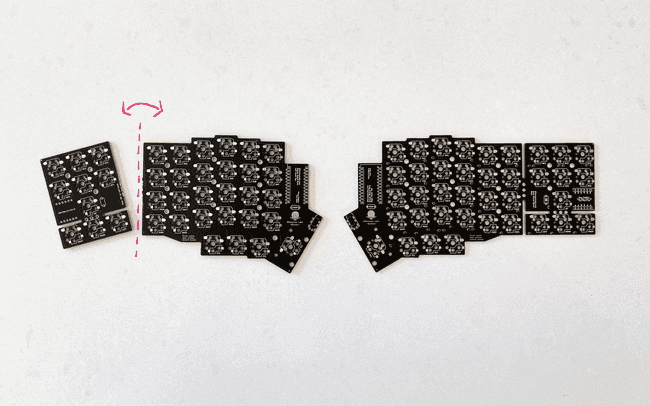
 Surprise! You can use the left over part as a 3x3 or 2x3 macro pad. Check out the Gust Macro Pad Guide.
Surprise! You can use the left over part as a 3x3 or 2x3 macro pad. Check out the Gust Macro Pad Guide.

3. Solder the hot-swap sockets
Breeze supports two types of hot-swap sockets, Cherry MX compatible and Kailh Low Profile Choc. Choose those that fit with your switch of choice. Hot-swap sockets are placed below the PCB. So if you have the PCBs now facing up for both the left and right hands, remember to solder the sockets on the back side of the corresponding board.
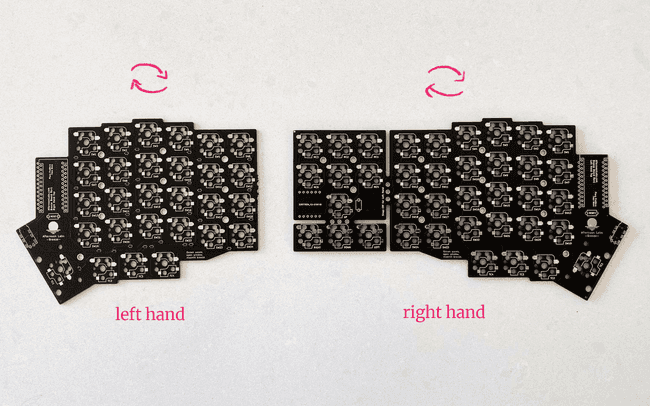

On the PCB, identify the white frame that matches the type of socket you’re using. The MX sockets sit within the white frame at the top of the switch holes, while the Choc sockets sit at the bottom.
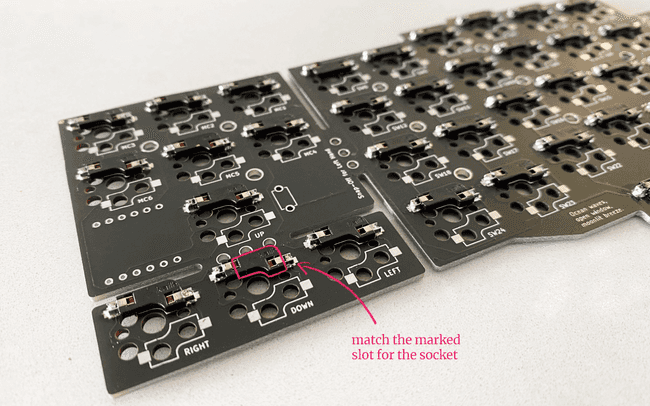
🚨🚨🚨 Stop and Double Check! 🚨🚨🚨
Before you continue make sure you understand that the sockets are soldered on the back of each side.
(1) Place a drop of solder on one of the pads, (2) then attach the socket and use the soldering iron to melt it into place. (3) Finally, solder the other pad. Test the first socket by plugging in one switch. Make sure it fits and that it’s in the correct orientation. Repeat for all sockets.
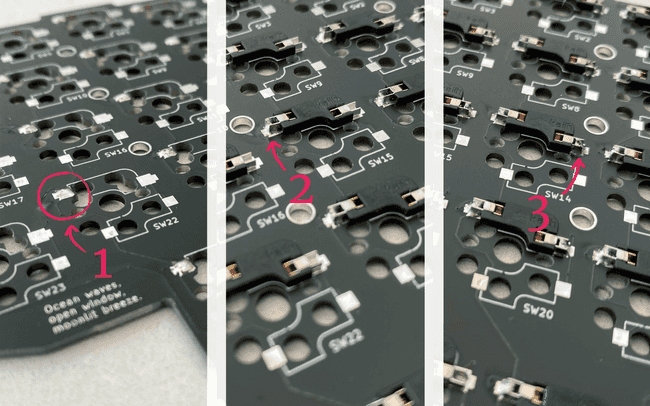
4. Install the TRRS jacks
Place the jack on the top side of each board. Solder it into place.
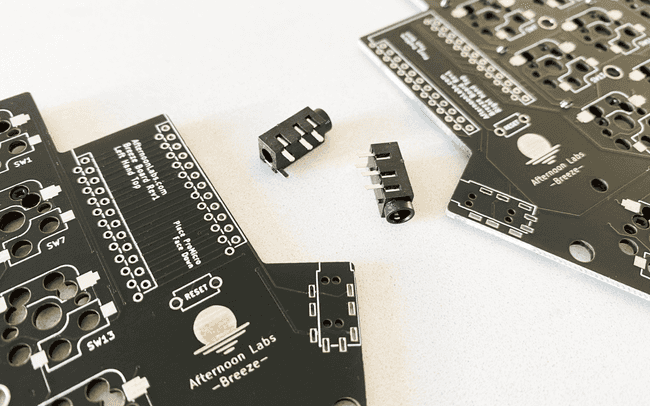
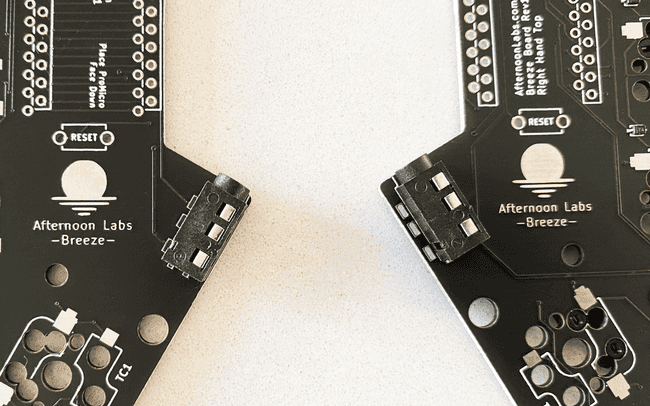
5. Flash the QMK firmware
Before we can attach the Pro-Micros, we need to flash them with the QMK firmware. Download the corresponding .hex files below. Then check out this guide for flashing using the QMK Toolbox.
- Breeze (Original with right wing)
- Southern Breeze (Left wing)
- Summer Breeze (Both wings)
6. Attach the Pro-Micros
Breeze uses two Pro-Micros (or compatible such as Elite-C) as its brain. On the top of each side, locate the text Place Pro-Micro Face Down, and the white frame around the through holes.
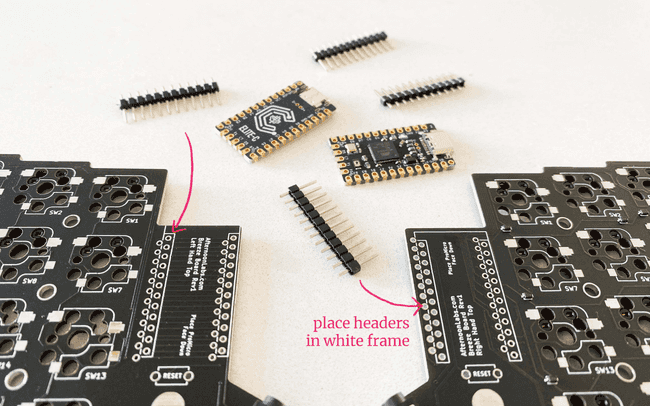
🚨🚨🚨 Stop and Double Check! 🚨🚨🚨
Before you continue make sure you orient your boards again. The Pro-Micro is installed on the top of each side. The Pro-Micro is installed with its top surface facing down.
Use the header pins provided with your Pro-Micro, position them so that the Pro-Micro faces down, and then insert them into the holes marked with the white frame. Verify your setup and then solder all pads.

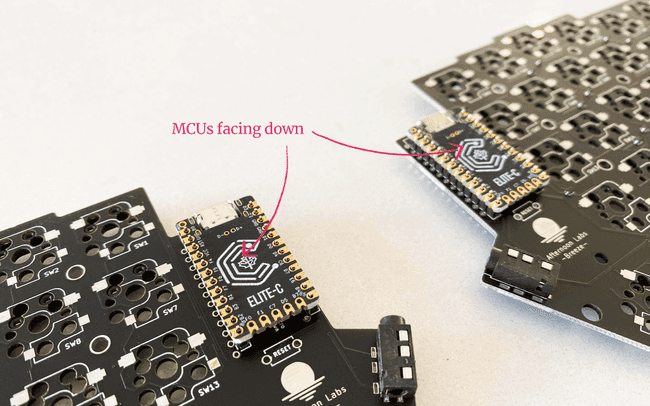
Another option would be to socket the Pro-Micro. Check out this guide.
7. Optional, install the reset button
The reset button is optional since it’s possible to use tweezers or another conductive wire to reset the board when necessary. After flashing the Breeze QMK firmware, you can use the keys to reset the board as well.
Insert the button next to the Pro-Micro and solder both legs.
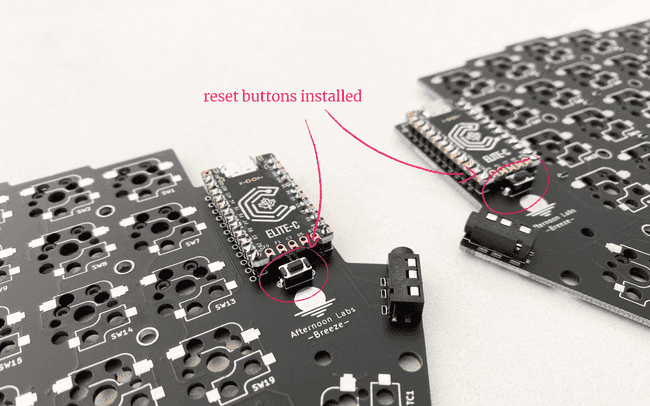
8. Install within the enclosure
In order to fit the board in, you may need to snip off the soldered header pins on the back of the board. Carefully remove those one by one using snippers.
There are two installation method for the enclosure:
-
Without Plates: The available enclosure can be used to house the PCB with no additional components. Instructions are provided in the Enclosure Installation Guide (without plate).
-
With Plates: For MX only - A switch plate can be used to further secure the switches into the Breeze keyboard enclosure, adding stability to the keys. To install the enclosure with a switch plate, read the MX Enclosure and Plate Installation Guide.
9. Add switches and keycaps
This is the fun part. If you haven’t already, install the switches into the hot-swap sockets, and cap them with your favorite caps.
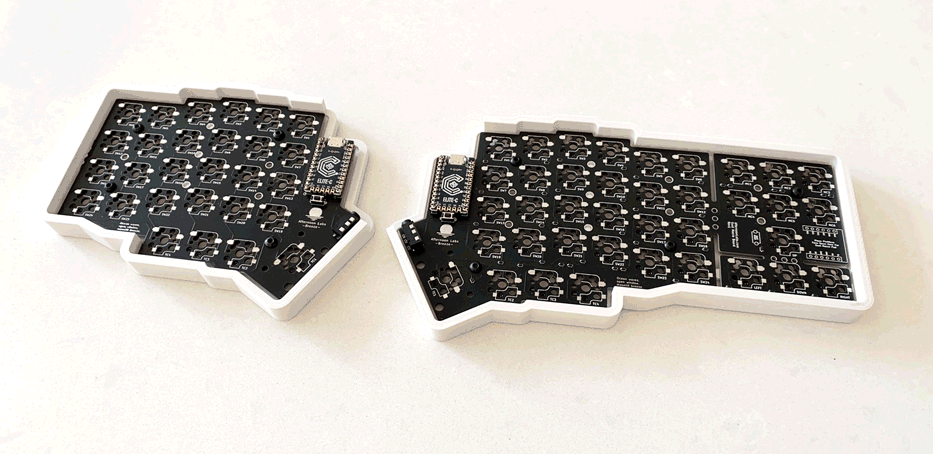
10. Connect
Use a TRRS cable to connect between the two sides via the TRRS jacks. Then connect either of the sides (doesn’t matter which) to your computer using a USB cable.
11. Make it yours!
The last step is to configure Breeze with keys however you want it to be.
There are two ways to do it:
- Easy - Download and use the VIA app with a simple and easy to use graphical interface for programming the Breeze.
- Use the Breeze QMK firmware configurator and follow this guide.
Enjoy!



